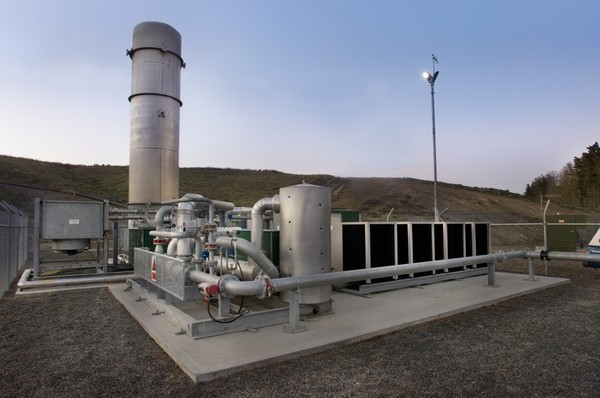Council sustainability initiative wins national award

Christchurch’s landfill gas scheme, which powers the city’s largest sports centre, has won the sustainability and clean technology category of the New Zealand Engineering Excellence Awards.
In a national first, a 3.7km pipeline takes methane gas from the closed Burwood Landfill to QEII Park, to heat the swimming pools and generate electricity for the complex.
The $4.2 million project saves ratepayers more than $1.1 million a year in energy costs, and earns about $1 million per annum in carbon credits, says Christchurch City Council City Water and Waste Manager Mark Christison.
“We’re rapt to have this project recognised as one of the country’s leading sustainability initiatives and this is only stage one of three – when the whole project’s finished, ratepayers will save about $2.3 million a year in energy costs.”
The complex scheme collects gas from approximately 18 wells, processes and compresses it, and transports it to QEII where it is burnt in modified boilers. The greenhouse gas generated by landfills is usually controlled by flaring to the atmosphere.
The money earned from carbon credits will fund the 28 initiatives in the Council’s Sustainable Energy Strategy for Christchurch 2008-18. The first, subsidised building consents for solar water heating systems, was launched this month.
Mr Christison says stage two of the landfill gas scheme is almost complete, extending the pipeline 6km from QEII to the Christchurch Wastewater Treatment Plant (CWTP), where the gas will be used in conjunction with a wood-waste boiler to heat the new biosolids drying plant.
The Council recently approved stage three, which will extend the pipeline 7km from the CWTP to heat, cool and power the Christchurch Art Gallery and the new Christchurch Civic Building. All three stages will cost about $8.2 million.
When the landfill gas runs out in 15 to 20 years, the stage two and three pipelines will carry biogas from the CWTP to fuel QEII, the art gallery and the civic building.
The awards attracted 64 entries across eight categories. The category won by the landfill gas scheme recognises excellence in new or improved clean technologies, lowering resource consumption, or improving environmental sustainability.
The scheme was up against stiff competition, including Dunedin Airport’s groundwater heat pump and the largely automatic building management system in the Department of Conservation’s head office, which adjusts the internal environment according to occupancy and weather conditions.
It was entered by Beca Carter Hollings and Ferner, and the Council, and was also named a finalist in the utilities, networks and amenities category.
The judges said the landfill gas scheme achieved a positive environmental outcome by converting a waste product and damaging greenhouse gas into a viable resource, by innovative use of technology that saved the community money.
